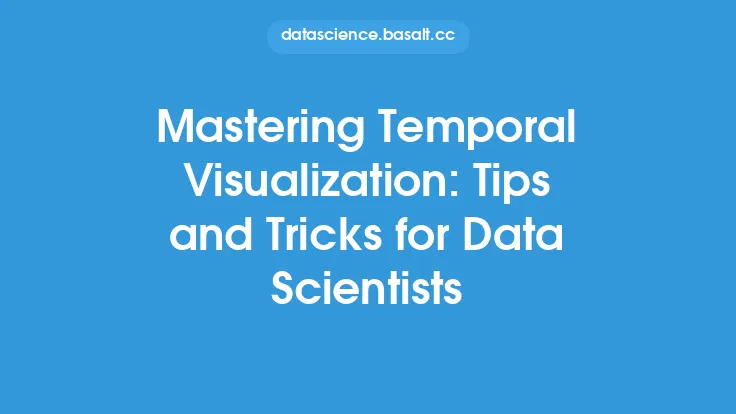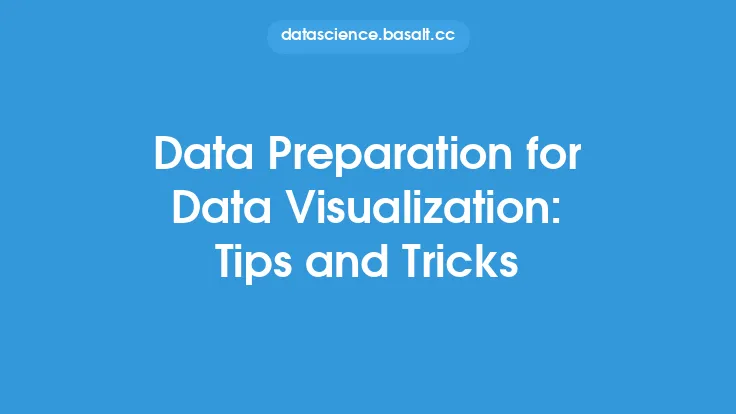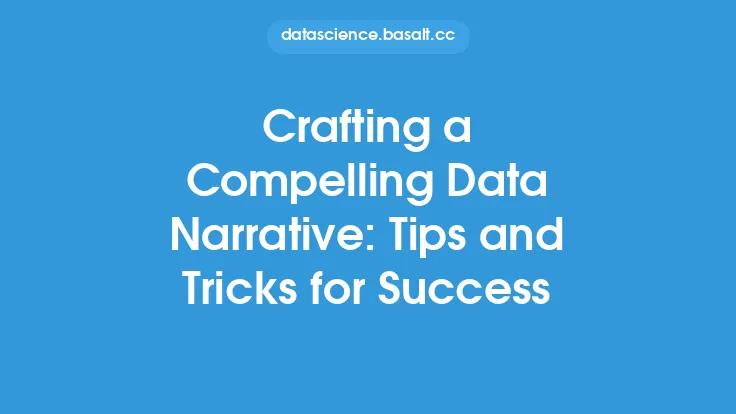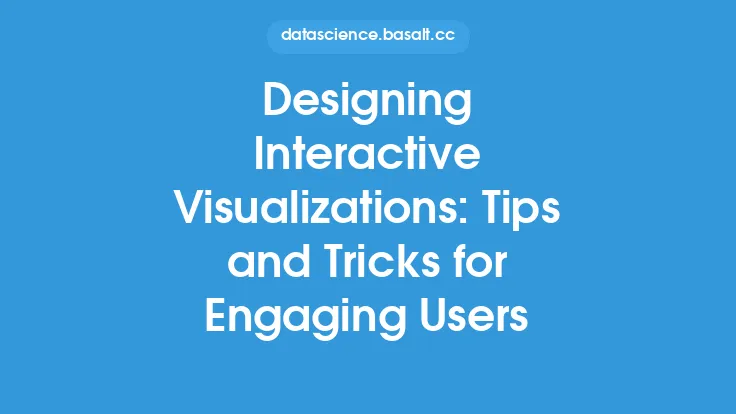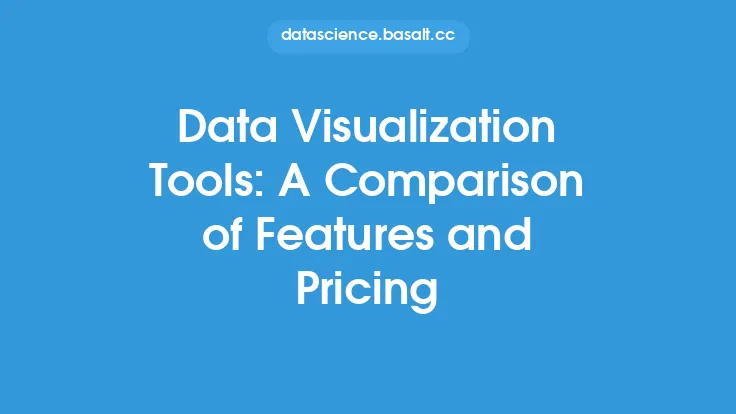As data visualization continues to play an increasingly important role in extracting insights from complex data, advanced users are constantly seeking ways to optimize their workflow and create more effective visualizations. For those who have already mastered the basics of data visualization, there are a plethora of tools and techniques that can help take their skills to the next level. In this article, we will delve into the world of advanced data visualization tools, exploring the tips and tricks that can help users create more informative, engaging, and interactive visualizations.
Introduction to Advanced Data Visualization Tools
Advanced data visualization tools are designed to provide users with a high degree of customization and flexibility, allowing them to create complex and interactive visualizations that can be used to communicate insights to both technical and non-technical audiences. These tools often include features such as data manipulation, filtering, and aggregation, as well as advanced visualization options such as 3D rendering, animation, and simulation. Some popular advanced data visualization tools include Tableau, Power BI, and D3.js, each of which offers a unique set of features and capabilities that can be leveraged to create sophisticated visualizations.
Tips for Working with Advanced Data Visualization Tools
One of the key challenges of working with advanced data visualization tools is navigating the often-steep learning curve that comes with mastering these complex systems. To get the most out of these tools, users should be aware of several key tips and tricks. First, it is essential to have a solid understanding of the underlying data, including its structure, quality, and limitations. This will help users to identify potential issues and opportunities for optimization, and to create visualizations that are tailored to the specific needs of their audience. Additionally, users should be familiar with the various data manipulation and filtering options available in their chosen tool, as these can be used to refine and focus the visualization. Finally, users should not be afraid to experiment and try new things, as this is often the best way to discover new features and capabilities.
Best Practices for Creating Effective Visualizations
Creating effective visualizations is a critical aspect of data visualization, and there are several best practices that advanced users should be aware of. First, it is essential to keep the visualization simple and focused, avoiding unnecessary complexity and clutter. This can be achieved by using clear and concise labeling, and by selecting a limited color palette that is consistent throughout the visualization. Additionally, users should consider the story that they want to tell with their visualization, and design the visualization accordingly. This may involve using interactive elements, such as filters and drill-down capabilities, to allow users to explore the data in more detail. Finally, users should be mindful of the audience for their visualization, and design the visualization with their needs and preferences in mind.
Advanced Visualization Techniques
There are several advanced visualization techniques that can be used to create more sophisticated and engaging visualizations. One of these is the use of 3D rendering, which can be used to create complex and interactive visualizations that simulate real-world phenomena. Another technique is the use of animation, which can be used to show changes in the data over time. Additionally, users can leverage simulation techniques, such as Monte Carlo simulations, to model complex systems and predict future outcomes. Finally, users can use techniques such as clustering and dimensionality reduction to identify patterns and relationships in the data that may not be immediately apparent.
Customizing and Extending Advanced Data Visualization Tools
One of the key benefits of advanced data visualization tools is their ability to be customized and extended. This can be achieved through the use of APIs and software development kits (SDKs), which allow users to create custom visualizations and integrate the tool with other systems and applications. Additionally, users can leverage community-driven repositories and forums, which provide access to a wealth of user-created content and extensions. By customizing and extending their chosen tool, users can create tailored solutions that meet their specific needs and requirements, and stay up-to-date with the latest developments and advancements in the field.
Troubleshooting and Optimizing Advanced Data Visualization Tools
As with any complex system, advanced data visualization tools can sometimes be prone to errors and performance issues. To troubleshoot and optimize these tools, users should be aware of several key strategies. First, it is essential to monitor system performance and identify potential bottlenecks, such as slow data loading or rendering times. Additionally, users should be familiar with the tool's logging and debugging capabilities, which can provide valuable insights into errors and issues. Finally, users should consider optimizing their visualizations for performance, by using techniques such as data aggregation and filtering, and by leveraging hardware acceleration and other advanced features.
Conclusion
Advanced data visualization tools offer a powerful set of features and capabilities that can be leveraged to create sophisticated and interactive visualizations. By following the tips and tricks outlined in this article, users can get the most out of these tools and create visualizations that are informative, engaging, and effective. Whether you are working with Tableau, Power BI, or D3.js, or exploring other advanced data visualization tools, the key to success lies in understanding the underlying data, mastering the tool's features and capabilities, and staying up-to-date with the latest developments and advancements in the field. With practice and experience, advanced users can unlock the full potential of these tools and create visualizations that drive insights, inform decision-making, and communicate complex ideas with clarity and precision.
